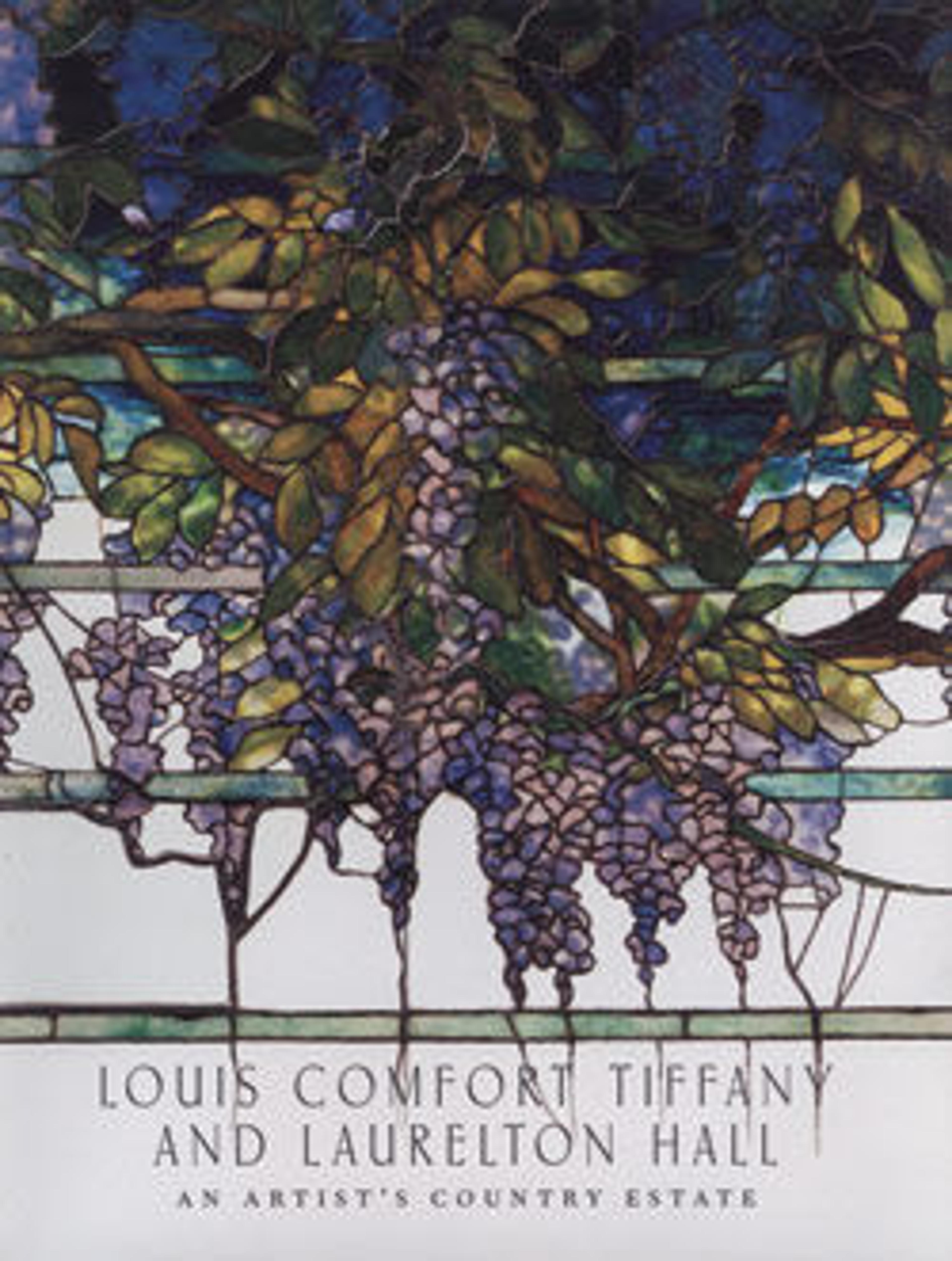Architectural Elements from Laurelton Hall, Oyster Bay, New York
This columnar screen once served as the entrance to Laurelton Hall, the extraordinary Oyster Bay, Long Island, home that Tiffany designed for himself between 1902 and 1905. The exotic capitals feature flowers (lotus, peony, poppy, and magnolia) in various stages of bloom. The blossoms are composed of glazed ceramic and the stems of tiny slivers of varicolored green glass. Iridescent glass
tiles cover the architrave, and geometric mosaics embellish the supporting corbeled arches, from which three bell-shaped lanterns are suspended.
Laurelton Hall was the crowning achievement of Tiffany’s multifaceted career. After he established the Louis C. Tiffany Foundation in 1918, the estate became the site of a residential summer program for artists. In 1957, it was tragically destroyed by fire. Some architectural elements were salvaged from the ruins, including this loggia.
tiles cover the architrave, and geometric mosaics embellish the supporting corbeled arches, from which three bell-shaped lanterns are suspended.
Laurelton Hall was the crowning achievement of Tiffany’s multifaceted career. After he established the Louis C. Tiffany Foundation in 1918, the estate became the site of a residential summer program for artists. In 1957, it was tragically destroyed by fire. Some architectural elements were salvaged from the ruins, including this loggia.
Artwork Details
- Title:Architectural Elements from Laurelton Hall, Oyster Bay, New York
- Designer:Designed by Louis C. Tiffany (American, New York 1848–1933 New York)
- Date:ca. 1905
- Geography:Made in Oyster Bay, New York, United States
- Culture:American
- Medium:Limestone, ceramic, and Fravrile glass
- Dimensions:21 x 23 ft. (640.1 x 701 cm)
- Credit Line:Gift of Jeannette Genius McKean and Hugh Ferguson McKean, in memory of Charles Hosmer Morse, 1978
- Object Number:1978.10.1
- Curatorial Department: The American Wing
More Artwork
Research Resources
The Met provides unparalleled resources for research and welcomes an international community of students and scholars. The Met's Open Access API is where creators and researchers can connect to the The Met collection. Open Access data and public domain images are available for unrestricted commercial and noncommercial use without permission or fee.
To request images under copyright and other restrictions, please use this Image Request form.
Feedback
We continue to research and examine historical and cultural context for objects in The Met collection. If you have comments or questions about this object record, please contact us using the form below. The Museum looks forward to receiving your comments.
